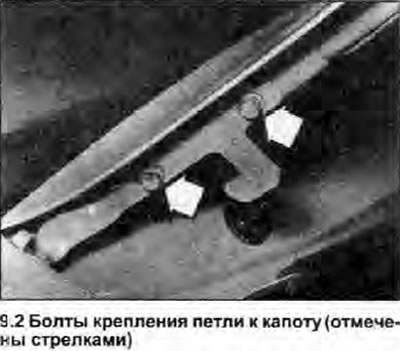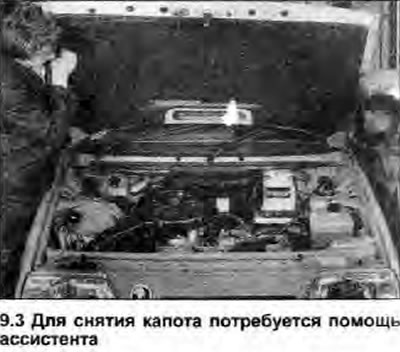Removing
Note: This procedure will require the assistance of an assistant.
1. Open the hood and place a thick layer of a rag under each of its rear corners to protect the paintwork from damage.
2. Draw around the hood hinges with a pencil, then loosen the bolts of their fastening to the hood (see photo).

3. Supporting the hood together with an assistant, lower its support and unscrew the bolts. Remove the hood (see photo).

4. If it is necessary to remove the hood support, remove it from the rubber bush located on the hood lock plate.
Installation
5. Install in reverse order of removal. If the old hood is installed, align the marks made before removal. When installing a new hood, center the bolt holes on the hood hinges. Tighten the hood hinge bolts only lightly at first, then carefully close the hood and make sure it is centered on the adjacent body panels.
6. After the hood position is adjusted (see below), tighten the bolts with a torque specified specifications.
Adjustment
7. If the distance the hood is from the front fenders is not the same, loosen the bolts securing the hinges to the hood and move the hood on the hinges in the right direction so that it stands centrally, then tighten the bolts with the tightening force regulated specifications.
8. If the hood is higher or lower than one of the front fenders when closed, move the hood rubber pads all the way down by screwing them into the lock panel, then close the hood and check its height relative to each wing. Screw the locking pin into the hood to reduce its height, or screw it outwards to lengthen it; when the pin height is correct (that is, when the hood is closed, it is flush with the fenders) Adjust the position of the rubber pads until they just touch the back of the hood.
9. If necessary, adjust the position of the hood lock, guided by Chapter 10.
